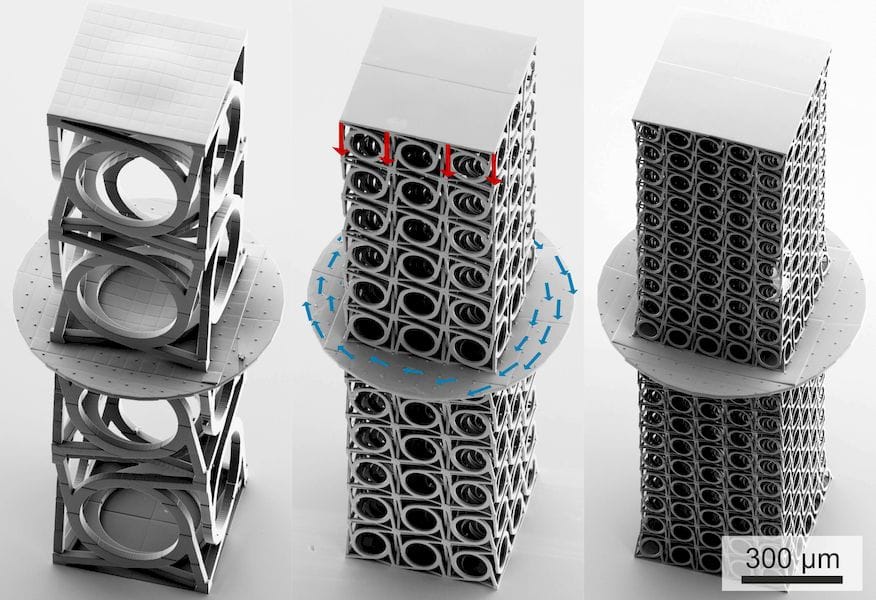
Last week we posted a story about metamaterials, but it seems there is far more to the story.
The idea of metamaterials is fascinating: 3D printing a shape in a common material to produce a kind of simulated material that offers unusual properties. The examples I cited in the post were mechanical examples where the slight flexibility of the original base material was exploited in ingenious ways to create the metamaterial.
However, it appears there are far more possibilities here. My thoughts had been limited to mechanical opportunities, but additional opportunities exist in radio frequencies, thermal and other dimensions.
A very interesting comment by reader Jon S explains this concept:
Metamaterials are going to have far-reaching, and in some cases revolutionary, effects on technology. We’ll be moving beyond the era of materials, or simple mixtures, with properties mostly found in nature, to materials with designer properties that can not naturally exist.
Dual-material metamaterials have already been printed (by MIT, I think) that exhibit negative thermal expansion coefficients (CTEs). If that can be commercialized that would be incredibly useful to the work I do.
This will go beyond their mechanical properties, Metamaterials can create electromagnetic effects that are classically not feasible. The most-publicized “trick” is probably the “cloaking device” that makes an object placed at the center invisible to radio waves, but there are many more applications.
Expect the world of RF to be forever changed, and if the structures can be scaled down to the sub-wavelength of light scale, seemingly-impossible optics can be built, with resolutions that break the classical diffraction limit, and with wafer thinness.
Similarly acoustic metamaterials will change every device with a microphone and speaker, and undoubtedly will lead to completely new devices too.
I always laugh in science fiction, like Star Trek, where they go a planet to extract some extremely valuable, naturally-occuring material. In the future, the most valuable and most useful materials will be built, in many cases from raw materials that have little intrinsic value.
When you think about materials in this way, I suspect technology strategies for 3D printing companies may shift.
For example, up to now there has been intense interest in increasing the number of materials available for 3D printing. Years ago the number of materials one could 3D print with was limited to those you could count on one hand, but today there are vastly more possibilities. However, that number pales when compared with the almost limitless number of materials available to traditional processes.
As a result, I feel there is a kind of chase occurring, where 3D printer companies are hoping in the long term to meet, or at least, approach this same level of materials by finding ways to 3D print them.
But when you think about the world in terms of metamaterials, perhaps that strategy could be wrong.
Instead of blindly pursuing all types of materials, perhaps an alternate strategy could be to pursue the development of metamaterials to cover off the engineering needs of designers and essentially ignore the traditional materials. Serve the need, not the past.
The only reason the traditional materials exist is that there was a need to use each of them, at least at one time.
Is there a need for particular types of metamaterials? I think so, yes. How many could there be? Limitless, perhaps, as it is limited only by imagination and need.
Perhaps the time has come for a true metamaterials company to emerge, one that specializes in the design of very specific materials that are enabled only by these advanced forms of 3D printing.
Such a company, if it started, might after decades emerge as an analog of today’s gigantic chemical companies, who control the world’s supplies of basic traditional materials.
Maybe there is a future “metaBASF” in the making somewhere deep in an underground lab?

